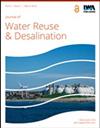固定化不同载体上的商业益生菌对水产养殖水体和沉积物的原位修复
IF 2.3
Q2 Environmental Science
引用次数: 2
摘要
在本研究中,我们通过分析氨氮(NH4–N)、硝酸盐氮(NO3–N)和亚硝酸盐氮(NO2–N),总氮(TN)、总磷(TP)和化学需氧量(CODCr)的变化,研究了牡蛎壳(Os)、洪积岩(Ve)和核桃壳(Ws)固定化益生菌对水产养殖水和沉积物的修复作用,以及水和沉积物的微生物群。观察到处理组对水质参数的积极或消极影响。与它们对水质参数的影响相比,处理组对泥沙参数的影响更好。Ve组对沉积物中NH4–N和NO3–N的修复效果最好(分别降低了5.22和1.66倍)。Os组TN和CODCr的相对浓度较低(分别下降3.77和0.95倍)。高通量测序结果显示,固定化益生菌在门属水平上增加了治疗组中功能菌的相对丰度。上述结果表明,牡蛎壳、洪积岩和核桃壳固定化的益生菌对养殖环境的修复有积极影响,尤其是对沉积物的修复。本文章由计算机程序翻译,如有差异,请以英文原文为准。
The in situ remediation of aquaculture water and sediment by commercial probiotics immobilized on different carriers
In the present study, we investigated the effect of probiotics immobilized by oyster shells (Os), vesuvianite (Ve) and walnut shells (Ws) on the remediation of aquaculture water and sediment by analyzing the variation of ammonia-nitrogen (NH4–N), nitrate-nitrogen (NO3–N), nitrite-nitrogen (NO2–N), total nitrogen (TN), total phosphorus (TP) and chemical oxygen demand (CODCr), as well as the microbiota of the water and sediment. The positive or negative effects of the treatment groups on the water quality parameters were both observed. Compared with their effects on water quality parameters, the treatment groups had better effects on sediment parameters. Group Ve had the best remediation effect of NH4–N and NO3–N in the sediment (decreased by 5.22 and 1.66 times, respectively). Group Os showed a lower relative concentration of TN and CODCr (decreased by 3.77 and 0.95 times, respectively). The high-throughput sequencing results revealed that the immobilized probiotics increased the relative abundances of functional bacteria in the treatment groups at the phylum and genus level. The above results showed that probiotics immobilized by oyster shells, vesuvianite and walnut shells positively affected the aquaculture environment's remediation, especially the sediment.
求助全文
通过发布文献求助,成功后即可免费获取论文全文。
去求助
来源期刊

Journal of Water Reuse and Desalination
ENGINEERING, ENVIRONMENTAL-WATER RESOURCES
CiteScore
4.30
自引率
0.00%
发文量
23
审稿时长
16 weeks
期刊介绍:
Journal of Water Reuse and Desalination publishes refereed review articles, theoretical and experimental research papers, new findings and issues of unplanned and planned reuse. The journal welcomes contributions from developing and developed countries.
 求助内容:
求助内容: 应助结果提醒方式:
应助结果提醒方式:


